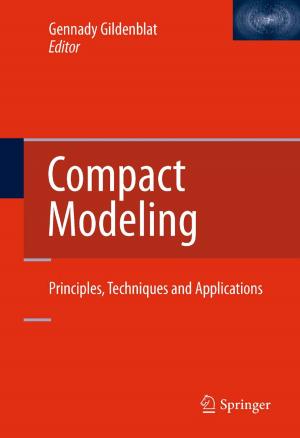Geophysical Interpretation using Integral Equations
Nonfiction, Science & Nature, Science, Earth Sciences, Geophysics, Mathematics, Mathematical Analysis| Author: | L. Eskola | ISBN: | 9789401123709 |
| Publisher: | Springer Netherlands | Publication: | December 6, 2012 |
| Imprint: | Springer | Language: | English |
| Author: | L. Eskola |
| ISBN: | 9789401123709 |
| Publisher: | Springer Netherlands |
| Publication: | December 6, 2012 |
| Imprint: | Springer |
| Language: | English |
Along with the general development of numerical methods in pure and applied to apply integral equations to geophysical modelling has sciences, the ability improved considerably within the last thirty years or so. This is due to the successful derivation of integral equations that are applicable to the modelling of complex structures, and efficient numerical algorithms for their solution. A significant stimulus for this development has been the advent of fast digital computers. The purpose of this book is to give an idea of the principles by which boundary-value problems describing geophysical models can be converted into integral equations. The end results are the integral formulas and integral equations that form the theoretical framework for practical applications. The details of mathematical analysis have been kept to a minimum. Numerical algorithms are discussed only in connection with some illustrative examples involving well-documented numerical modelling results. The reader is assu med to have a background in the fundamental field theories that form the basis for various geophysical methods, such as potential theory, electromagnetic theory, and elastic strain theory. A fairly extensive knowledge of mathematics, especially in vector and tensor calculus, is also assumed.
Along with the general development of numerical methods in pure and applied to apply integral equations to geophysical modelling has sciences, the ability improved considerably within the last thirty years or so. This is due to the successful derivation of integral equations that are applicable to the modelling of complex structures, and efficient numerical algorithms for their solution. A significant stimulus for this development has been the advent of fast digital computers. The purpose of this book is to give an idea of the principles by which boundary-value problems describing geophysical models can be converted into integral equations. The end results are the integral formulas and integral equations that form the theoretical framework for practical applications. The details of mathematical analysis have been kept to a minimum. Numerical algorithms are discussed only in connection with some illustrative examples involving well-documented numerical modelling results. The reader is assu med to have a background in the fundamental field theories that form the basis for various geophysical methods, such as potential theory, electromagnetic theory, and elastic strain theory. A fairly extensive knowledge of mathematics, especially in vector and tensor calculus, is also assumed.















